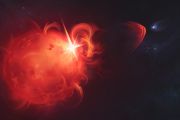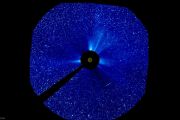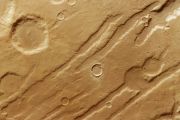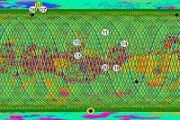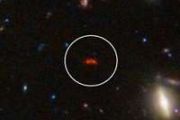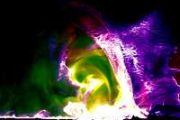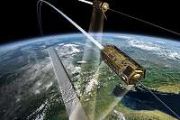
Copernical Team
Rocket Lab signs deal with Leidos to launch 4 HASTE missions
 Rocket Lab USA, Inc. (Nasdaq: RKLB) has signed a contract with Leidos to launch four HASTE (Hypersonic Accelerator Suborbital Test Electron) missions.
The missions, scheduled across 2024 and 2025, will lift off from Rocket Lab Launch Complex 2 at Virginia's Mid-Atlantic Regional Spaceport within NASA's Wallops Flight Facility. Rocket Lab was selected by Leidos to provide hypersonic test la
Rocket Lab USA, Inc. (Nasdaq: RKLB) has signed a contract with Leidos to launch four HASTE (Hypersonic Accelerator Suborbital Test Electron) missions.
The missions, scheduled across 2024 and 2025, will lift off from Rocket Lab Launch Complex 2 at Virginia's Mid-Atlantic Regional Spaceport within NASA's Wallops Flight Facility. Rocket Lab was selected by Leidos to provide hypersonic test la Earth from Space: Blooms in the Gulf of Finland
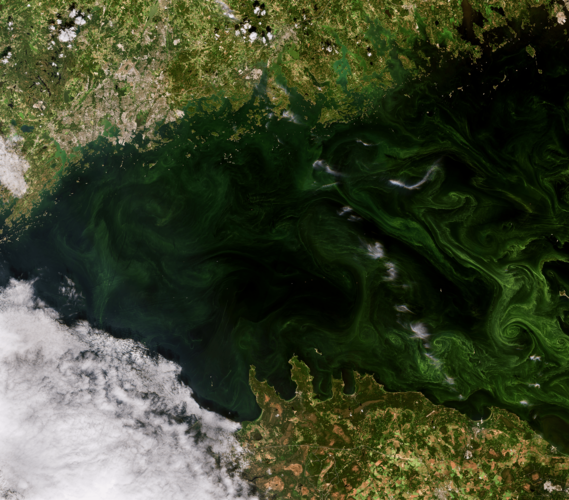 Image:
This Copernicus Sentinel-2 image features swirls of vivid, emerald green algal blooms in the Gulf of Finland.
Image:
This Copernicus Sentinel-2 image features swirls of vivid, emerald green algal blooms in the Gulf of Finland. Technology to boost high-speed satellite connectivity

British electronics specialist Filtronic is developing advanced technology that will enable next-generation satellite constellations to deliver high-speed broadband internet coverage.
Fitness tracker beyond Earth
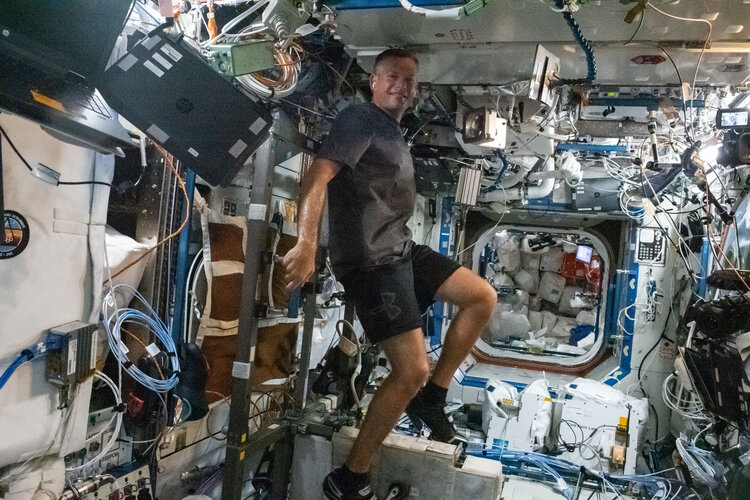
One of the experiments during ESA astronaut Andreas Mogensen’s mission will track his health and body vital signs during his daily exercise in space.
Musk, Zuckerberg visit US congress to discuss AI
 Big tech bigwigs including Elon Musk and Mark Zuckerberg traveled to Capitol Hill on Wednesday to share their plans for artificial intelligence as the US prepares to draw up legislation to better control the technology.
Senator Chuck Schumer, the Democratic majority leader of the US Senate, has planned a series of so-called AI Innovation forums, closed door meetings where lawmakers can quiz
Big tech bigwigs including Elon Musk and Mark Zuckerberg traveled to Capitol Hill on Wednesday to share their plans for artificial intelligence as the US prepares to draw up legislation to better control the technology.
Senator Chuck Schumer, the Democratic majority leader of the US Senate, has planned a series of so-called AI Innovation forums, closed door meetings where lawmakers can quiz Alleged bodies of 'non-human beings' shown in Mexican Congress
 The alleged bodies of two "non-human beings" were presented during a congressional hearing in Mexico, generating a mixture of surprise, disbelief and ridicule on social media on Wednesday.
The purported mummified remains were exhibited in two small display cases on Tuesday - the first time the Mexican Congress has officially addressed the issue of possible extraterrestrial life.
The all
The alleged bodies of two "non-human beings" were presented during a congressional hearing in Mexico, generating a mixture of surprise, disbelief and ridicule on social media on Wednesday.
The purported mummified remains were exhibited in two small display cases on Tuesday - the first time the Mexican Congress has officially addressed the issue of possible extraterrestrial life.
The all The Vostochny cosmodrome: symbol of Moscow's struggling space sector
 Russia's Vostochny cosmodrome, where President Vladimir Putin hosted North Korean leader Kim Jong Un Wednesday, has become a symbol of lingering problems in Moscow's space sector: from lengthy delays to rampant corruption.
Built in the Russian Far East near the Chinese border, it opened for launches in 2016 and aimed to reduce Moscow's dependence on the main space base of Baikonur, which bec
Russia's Vostochny cosmodrome, where President Vladimir Putin hosted North Korean leader Kim Jong Un Wednesday, has become a symbol of lingering problems in Moscow's space sector: from lengthy delays to rampant corruption.
Built in the Russian Far East near the Chinese border, it opened for launches in 2016 and aimed to reduce Moscow's dependence on the main space base of Baikonur, which bec NASA joins the still controversial search for UFOs
 NASA on Thursday officially joined the search for UFOs - but reflecting the stigma attached to the field, the US space agency kept secret for hours the identity of the person heading a new program tracking mystery flying objects.
The official's appointment is the result of a year-long NASA fact-finding report into what it calls "unidentified anomalous phenomena," or UAP.
"At NASA, it's
NASA on Thursday officially joined the search for UFOs - but reflecting the stigma attached to the field, the US space agency kept secret for hours the identity of the person heading a new program tracking mystery flying objects.
The official's appointment is the result of a year-long NASA fact-finding report into what it calls "unidentified anomalous phenomena," or UAP.
"At NASA, it's NASA releases UFO report and says more science and less stigma are needed to understand them
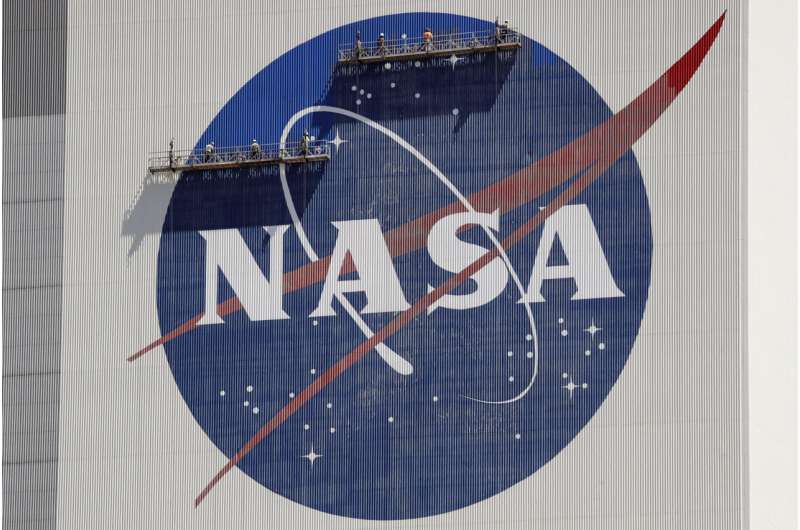
Teams watch weather as OSIRIS-REx prepares to return asteroid sample
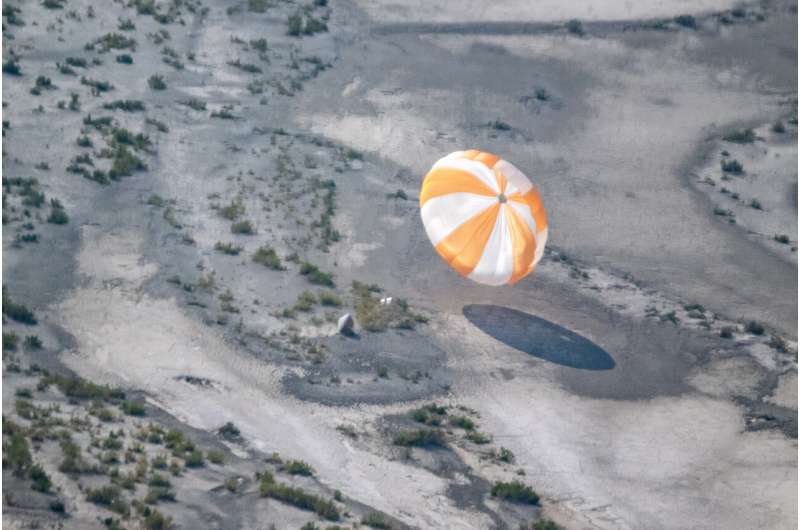
This September, after traveling billions of miles through our solar system, NASA's OSIRIS-REx spacecraft will cruise past Earth with an extraordinary delivery. As it passes, it will release a mini-fridge size capsule containing a sample of primordial space rock collected from an asteroid located between the orbits of Earth and Mars.
OSIRIS-REx—the Origins, Spectral Interpretation, Resource Identification, and Security–Regolith Explorer—is the first U.S. mission to collect a sample from an asteroid. Scientists hope the pristine material it collected from asteroid Bennu in 2020—about half a pound of rubble and dust from the asteroid's surface—will provide a window into 4.5 billion years ago when the sun and planets were forming.
Before it can do that, the sample's protective capsule will withstand temperatures twice as hot as lava, and the second-fastest velocity ever achieved by a human-made object entering Earth's atmosphere.
After entering Earth's atmosphere at around 36 times the speed of sound, the capsule may eventually encounter wind, rain, and other weather conditions as it drops closer to the surface. Regardless of weather, it will land in the Great Salt Lake Desert, an arid landscape known for its scorching summer temperatures and its salt flats, the remnants of an ancient lakebed where crusty salt deposits coat the ground.






